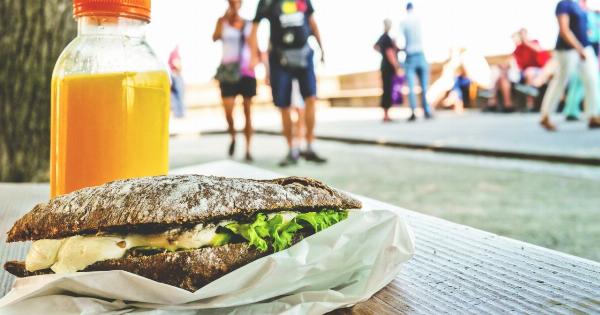A juicy, savoury burger is one of the most loved food items across the world. The smell of meat patty along with the crispy texture of the toppings and buns make it more appealing.
However, have you ever thought about what exactly happens to your body after you consume a burger? This article aims to take you through the journey of a burger inside your body and what goes on inside after you consume it.
Burger Components
Before we dive into the details of what goes on inside your body after you eat a burger, let’s take a look at the basic components of a typical burger:.
- Bun
- Meat patty
- Cheese
- Lettuce
- Tomato
- Ketchup/Mayonnaise/Mustard/Relish
- Pickles
Mouth: Step #1
The first step in the process of digesting the burger begins in the mouth. Once you take your first bite, your teeth crush and grind the food into smaller pieces. This process is known as mastication.
As you chew, the burger mixes with saliva in your mouth, which contains digestive enzymes that begin to break down carbohydrates, specifically starches into simpler sugars that the body can easily absorb.
Step #2: Esophagus
The next process takes place when food is pushed down the esophagus by the muscles known as Peristalsis. It is a series of involuntary wave-like movements that transport food towards the stomach.
The food you swallowed can be 10 cm in diameter, which means that your oesophagus has to work hard to move the burger down its way to the next destination.
Step #3: Stomach
Once the burger arrives in the stomach, it mixes with digestive juices containing hydrochloric acid and enzymes. Then, it’s churned and ground until it turns into a thick liquid.
This process helps to break down the protein, which is the primary nutrient in the meat patty. The protein molecules are broken down into amino acids and transported into the bloodstream. This is a vital component for repairing and maintaining body tissues. The journey approximately takes anywhere between 2-4 hours in the stomach.
Step #4: Small intestine
After the stomach, the relatively small intestine is the next point of call for the burger. The small intestine has three distinct sections: Duodenum, Jejunum and Ileum. It is at this stage of the digestive process that nutrients enter the bloodstream.
In particular, the small intestine absorbs fats and fat-soluble vitamins, such as vitamins A, D, E and K. These nutrients are then transported to the liver, where they are processed and stored until the body requires it.
Step #5: Large intestine
The final stage of digestion is the large intestine, where bacteria that help to digest undigested food are found. The large intestine pushes the undigested food into a straight line towards the rectum and then the anus.
This process results in the formation of stool, which is then ejected from the body through the anus.
Effects of Burger Consumption on the Body
Although a burger can be a delicious treat to satisfy your taste buds, it also has its side effects on the body. Here are some of its possible effects:.
- Weight gain: According to the CDC, foods that are high in calories, fats, and sugars can contribute to weight gain, which later leads to obesity and other health problems.
- Acne: Research shows that consuming fast foods high in sugar, fat, and calories can increase the chance of getting acne.
- Heart disease: Too much consumption of high-fat foods such as fast foods can increase blood pressure and cholesterol levels, which increases your risk of cardiovascular diseases such as stroke and heart failure.
- Diabetes: Regular consumption of fast foods can increase the risk of type 2 diabetes due to the high sugar content in fast food meals.
Conclusion
This article has highlighted what exactly happens inside your body after consuming a burger. While burgers can be enjoyable treats, regular consumption of fast foods can have adverse effects on your health.
The key takeaway from this article is that moderation is necessary when it comes to fast food consumption.































